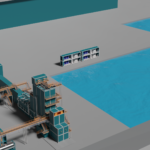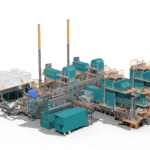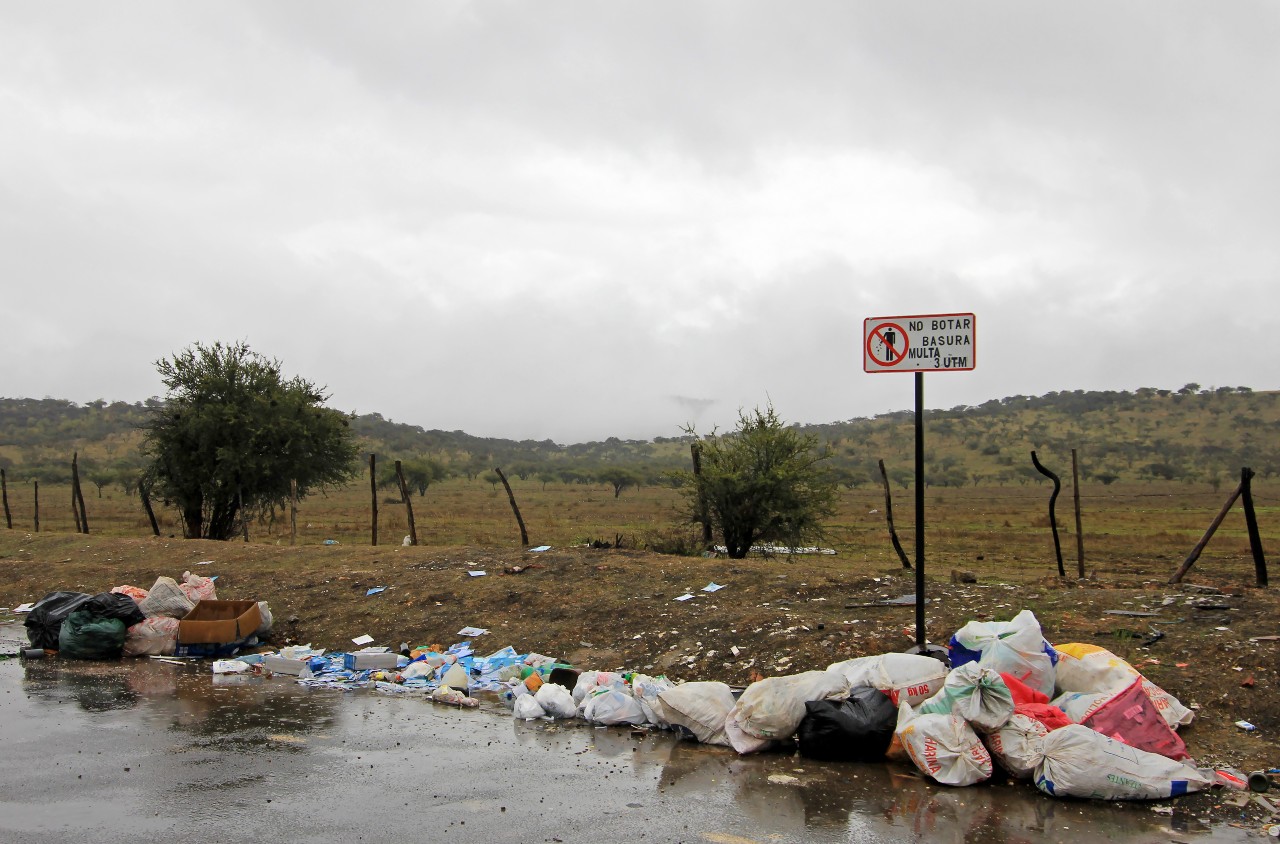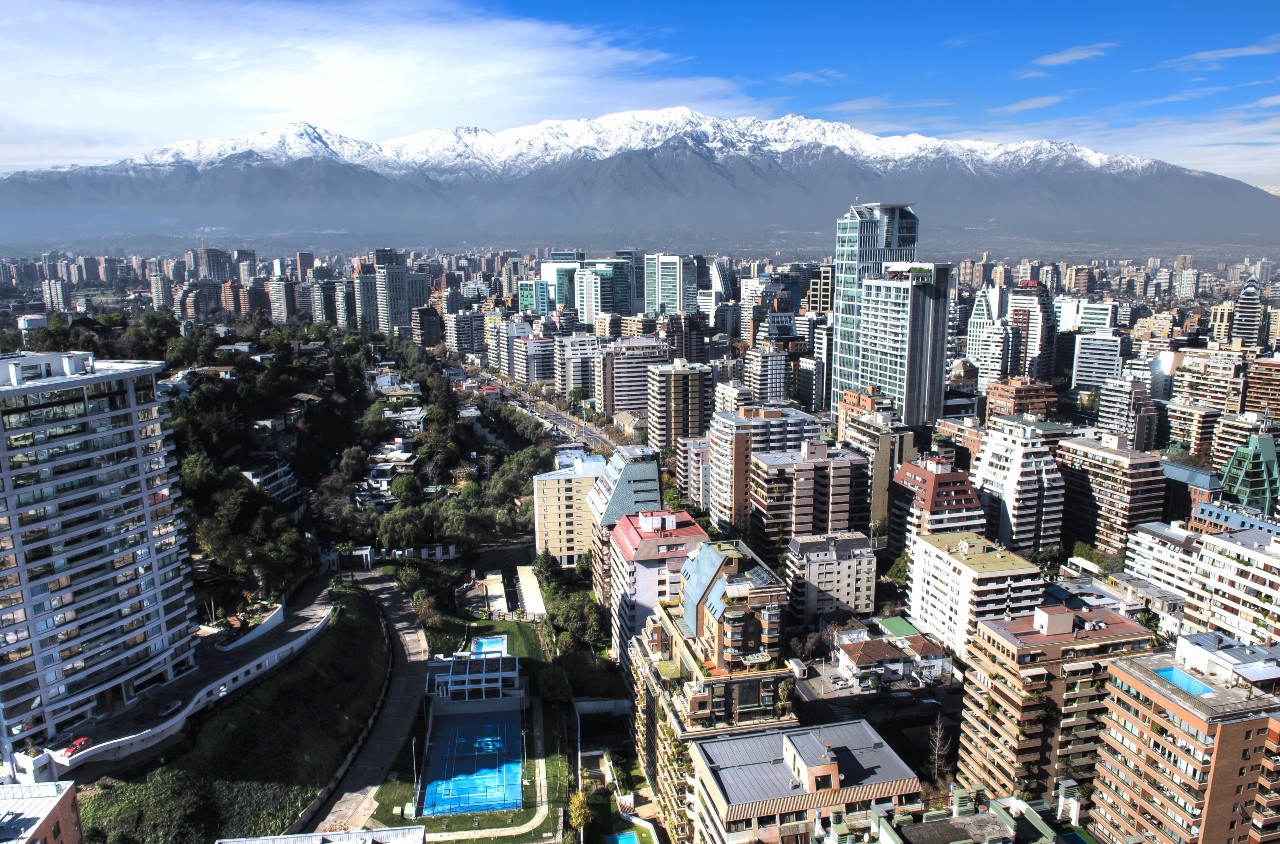Santiago, also known as Santiago de Chile, is the capital and largest city of Chile as well as one of the largest cities in the Americas. It is the center of Chile’s largest and most densely populated conurbation, the Santiago Metropolitan Region, whose total population is over 7 million. The city is entirely located in the country’s central valley. Most of the city lies between 500 m and 650 m above mean sea level. Founded in 1541 by the Spanish conqueror Pedro de Valdivia, Santiago has been the capital city of Chile since colonial times.
The city lies in the center of the Santiago Basin, a large bowl-shaped valley consisting of broad and fertile lands surrounded by mountains. The city is flanked by the main chain of the Andes to the east and the Chilean Coastal Range to the west. Due to Santiago’s location on the Pacific Ring of Fire at the boundary of the Nazca and South American plates, it experiences a significant amount of tectonic activity. The first earthquake on record to strike Santiago occurred in 1575, only 34 years after the official founding of the city. The 1647 Santiago earthquake devastated the city, followed by the 1960 Valdivia earthquake and the 1985 Algarrobo earthquake both causing significant damage in Santiago. They led to the development of strict building codes with a view to minimizing future earthquake damage. In 2010 Chile was struck by the sixth largest earthquake ever recorded, reaching 8.8 on the moment scale.
Chile has enjoyed rapid and sustained economic growth in recent decades. However, this economic growth has been accompanied by severe environmental degradation and social costs. Historically, the country has focused on the appropriate final disposal of waste through sanitary landfill. Until 1990 all the MSW produced in Santiago was disposed of in landfills or dumping sites. Thanks to the policies introduced from the 1990’s, the government has improved quality landfill regulations and increased controlled post-closure programs, significantly reducing the number of dumpsites. However, despite this progress, the environmental problems generated by the hoarding of solid waste in landfills, such as GHG emissions, water pollution, land erosion, and the rapid filling of the landfills, have shown that concentrating efforts on sanitary final disposal is not enough. The last study conducted by the Ministry of the Environment stated that less than 20% of waste is recycled. The rest of the waste is disposed of in landfills, which generate 35% of national CH4 emissions, making the waste sector the second most relevant methane emission source. It is estimated that in 2020 approximately 4,400,000 tpa of waste is generated and this will increase to 5,250,000 tpa by 2030.
Currently, there are approximately 60,000 informal collectors in the country collecting between 2 to 10 tons per month per person, depending on the zone in which they operate. They contribute over 80% of the total waste that is recycled at national level. The inclusion of the informal sector is highly relevant for increasing the waste collection/treatment rates. A simple first step is a better flow of information and increase awareness. Even though in Santiago and other regions some informal collectors have formed organizations to achieve better income, there is still no information about the area they work on, specific materials they collect, or if they work based on a specific schedule. Including informal collectors in the waste collection process will also significantly reduce collection and treatment costs. Hence, for the system to work effectively it is imperative to improve communications between municipalities, informal recyclers, and communities.
WOIMA has the perfect solution to help Santiago reduce the waste-induced challenges. We have developed a decentralized waste management and power generation solution called “WOIMA Ecosystem” that helps countries and cities to cope with the increasing waste challenges that they are facing. WOIMA Ecosystem recycles the waste into raw materials and energy in the most efficient manner close to where the waste has been generated reducing the waste quantity by over 95%. The small-to-medium size WOIMA Ecosystems are distributed close to where the waste is generated, thus offering significant waste logistics and power distribution savings in addition to solving the waste problem.
Follow our blog series “Drowning in Waste” to find out more about how WOIMA can assist various countries and cities to mitigate their waste-induced challenges.
WOIMA Ecosystem for 250 tons per day of MSW
Decentralized W2E power generation Nairobi, Kenya
Find out more about wasteWOIMA® technical solution
Check Your Waste Characteristics
Contact Us
WOIMA Corporation is a Finnish supplier of best-in-class waste-to-value products, projects and services worldwide. We have developed solutions that enable us, and the customer, to transform and recycle virtually any waste stream into raw materials and energy. At WOIMA we combine Finnish engineering know-how in waste management with power generation design expertise. These solutions are used in Finland every day. They support the circular economy ideology and ensure that less than 1% of Finland’s waste ends up in landfills.
Our mission is to improve quality of life both locally and globally, as well as empower people to utilize waste as a commodity. Our decades of international project management experience ensure an on-time, in-budget and high-quality WOIMA solution delivery across the globe.







